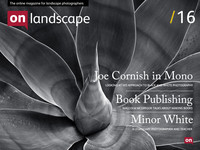Master photographer

Tim Parkin
Amateur Photographer who plays with big cameras and film when in between digital photographs.
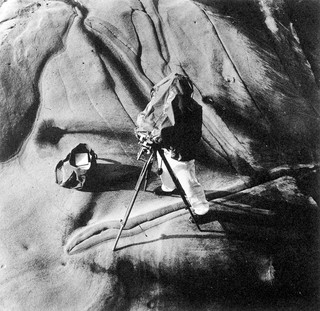 Some photographers have an extended influence far beyond their public notoriety. Minor White epitomises these individuals. His work in analysing and teaching photography created a whole host of ‘followers’ and in some cases ‘acolytes’ and his writing still inspires today, but a lot of people don’t know his photography (or may be put off by his proclivities) which is a real shame. Hopefully this short biography will help as an introducton. For extensive information about Minor White, I strongly recommend “The Eye That Shapes” which studies his work and teachings in some detail and includes a great sampling from his portfolios (see the book review in this issue).
Some photographers have an extended influence far beyond their public notoriety. Minor White epitomises these individuals. His work in analysing and teaching photography created a whole host of ‘followers’ and in some cases ‘acolytes’ and his writing still inspires today, but a lot of people don’t know his photography (or may be put off by his proclivities) which is a real shame. Hopefully this short biography will help as an introducton. For extensive information about Minor White, I strongly recommend “The Eye That Shapes” which studies his work and teachings in some detail and includes a great sampling from his portfolios (see the book review in this issue).
Minor Was born in 1908 to a book keeper and a dressmaker and received his first camera from his grandfather at the age of 8. Over the next few years his parents had various separations until they separated when he was 21. At 16, Minor inheritied a carbon arc projector and a whole load of historical travel slides.
He had a mixed art and science education, taking part in stage productions, writing poetry and gaining distinctions in science and literature. At eighteen he realizes his sexuality with ‘a brief crisis’ - charming understatement.
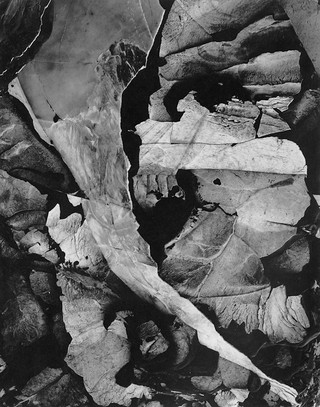 He goes on to study at Minnesota university majoring in Botany with a sideline in literature and poetry. The botany course includes education in processing photographs of algae, the start of his abstract work perhaps. He leaves university when he realises he won’t be able to pass although he works part time and finishes his degree through taking night and day courses, graduating in 1934.
He goes on to study at Minnesota university majoring in Botany with a sideline in literature and poetry. The botany course includes education in processing photographs of algae, the start of his abstract work perhaps. He leaves university when he realises he won’t be able to pass although he works part time and finishes his degree through taking night and day courses, graduating in 1934.
He continues to write poetry whilst living in with a group of lifestyle tolerant colleagues. His first real photographs are taken on walking trips with this group of friends whilst he earned enough to live on working as a night clerk at a hotel.
In 1938 at the age of 30, he starts a photographic club at Reed College. Over the next few years he photographs mostly architectural work. He also shoots players in the theatrical productions that he and his colleague associate with.
It is only in 1935 that Minor really starts work in a style we would recognise, photographing in the landscape and shooting details using a speed graphic camera.
He writes more during his thirties (nearly all of his diaries and writings are archived) and also takes a brief stint in the army intelligence where he also writes poetry quite prolifically.
At the end of his 30’s he leaves the army and begins to work at the Museum of Modern Arts. Over the next couple of decades he jumps around jobs teaching at various colleges and universites under the auspices of Beaumont and Nancy Newhall, the museums librarian and curator respectively.
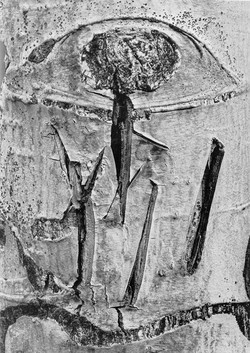 His association with the Newhalls enables an introduction to Alfred Stieglitz whose theory of equivalents - that a photograph can act as the equivalent of something else - inpires his work onto new channels. It also brings him into the social circle of other seminal photographers such as Harry Callahan, Bernice Abbott, Edward Steichen, Paul Strand and Edward Weston.
His association with the Newhalls enables an introduction to Alfred Stieglitz whose theory of equivalents - that a photograph can act as the equivalent of something else - inpires his work onto new channels. It also brings him into the social circle of other seminal photographers such as Harry Callahan, Bernice Abbott, Edward Steichen, Paul Strand and Edward Weston.
It is the influence of Edward Weston, Ansel Adams and Steiglitz pushing in different directions under which Minor creates his own credo of 'straight' photography with an interpretive twist. (if he lived now he would have been amused by the label 'straight'!)
In 1952 at the age of 44 Minor White, Ansel Adams, Dorothea Lange, Ernest Louie, Barbara Morgan, Beaumont and Nancy Newhall and Dody Warren start the Aperture imprint with Minor as editor - a highly influential magazine that still runs today.
Minor also worked in colour for a time in his late forties, some of these pictures are available in “The Eye That Shapes” (one included below). It was during this time that he worked with Ansel Adams and becomes a proponent of his ‘Zone System’, subsequently writing an in depth technical book on it’s use and creative application.
In his fifties, Minor investigated different religions and philosophies, beginning with the I-Ching and ‘Zen and the Art of Archery’ and moving on to Gestalt approaches and eastern mysticism. He also created a home that was heavily Japanese influenced and included areas dedicated to Zen meditation.
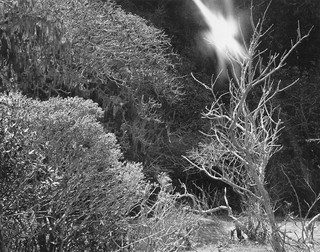 In the latter part of his life, he developed a cult like following inspiring an annoying in equal degrees. He was dictatorial in style and it has been suggested that he used hypnosis techniques in his workshops and teaching (he took courses in hypnotism). Paul Caponigro, Nathan Lyons, Pete Turner and Jerry Uelsmann were some of his more famous acolytes.
In the latter part of his life, he developed a cult like following inspiring an annoying in equal degrees. He was dictatorial in style and it has been suggested that he used hypnosis techniques in his workshops and teaching (he took courses in hypnotism). Paul Caponigro, Nathan Lyons, Pete Turner and Jerry Uelsmann were some of his more famous acolytes.
It has been said that you can neatly summarise the difference between Ansel Adams and Minor White as saying that one invented the Zone system and one the Zen system - a surprisingly accurate description, however terse. Minor was as influential at the time as Ansel and spent more time teaching the ‘art’ of photography rather than the rather straight technical expression of Ansel’s legacy. Minor was undoubtedly a complex individual, his sexual orientation informed many of his photographs (which, although unsubtle to our informed eyes, were well received in art circles of the time) as did his constant attempts to discover a underlying meaning in terms of his spiritual religion and spiritual values. His photography worked well beyond the literal, looking not for what a photograph is but for what else it is.
One of my main learnings from Minor White is his approach to sequences of images. He wrote repeatedly on the power of related images and how they can say more about a subject or the photographers relation with it than the a single image, however moving or beautiful. Check out the books we've reviewed in this issue for more info.

